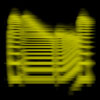| Author
|
Shelf eq
|
TimeTraveller
IsraTrance Full Member

Started Topics :
80
Posts :
3207
Posted : Nov 18, 2010 12:28
|
Quote:
|
On 2010-11-18 02:44, Colin OOOD wrote:
The way I see it (until your teacher corrects me  ) a wall gives the equivalent of a high shelf which reduces the level of high frequencies by a fixed amount. The air itself is a low-pass filter, with a cutoff depending on humidity and distance, amongst other things. ) a wall gives the equivalent of a high shelf which reduces the level of high frequencies by a fixed amount. The air itself is a low-pass filter, with a cutoff depending on humidity and distance, amongst other things.
|
|
Thanks for correcting me with the wall(it was my thinking here with this,not from my teachers),sounds convincing.And the example with the Air is really a special,gonna ask soon.
Not for smartassing here I would not write here what he says to correct you man hehe full respect to you long time psytrance wizzard.It's just interesting to me.Greets
        https://soundcloud.com/shivagarden https://soundcloud.com/shivagarden |

|
|
Mike A
Subra

Started Topics :
185
Posts :
3954
Posted : Nov 18, 2010 13:07
|
Quote:
|
On 2010-11-17 16:39, Nomad Moon wrote:
So is it better to use a shelf on basses?
|
|
Make one with a shelf, and another one with a cut.
Which one sounds better? Good. Now use that one. 
|

|
|
Nomad Moon
IsraTrance Full Member

Started Topics :
134
Posts :
1516
Posted : Nov 18, 2010 13:55
|
guys thank u very much for the replies, as always very good info here, thanx
|

|
|
Colin OOOD
Moderator

Started Topics :
95
Posts :
5380
Posted : Nov 18, 2010 14:15
|
|
Maine Coon
IsraTrance Junior Member

Started Topics :
12
Posts :
1659
Posted : Nov 18, 2010 20:28
|
TimeTraveler,
Youíre right about the underwater hearing and I was wrong: it is more of a low-pass. We hear under water because of the sound conduction through our skull (we canít hear the usual way - through the tympanic membrane) and bones resonate at lower frequencies. Thatís why our voice sounds lower to us when we speak vs. when we listen to a recording of our voice.
Thatís the theory.
But in my own experience, it sounds like there is a low-pass and then a boost in very high frequencies. Like everything sounds muffled but you can also hear very high-pitched sounds from grains of sand rolling on the bottom. Or when you listen to a motor boat, it will sound like a very low bass rumble and very high-pitched sound (almost like an old-fashioned alarm clock bell).
You were right, though Ė itís not really a high-pass. And maybe others donít hear it his way.
But Willís example is definitely a low-pass (or shelf?): lower frequencies bend and get over the hill, while higher frequencies bounce off and get scattered fast. Itís the same reason why I can hear an AM radio from 400 miles away but I can barely get an FM station from 30 miles: AMís longer waves bend around the Earthís curvature, FMís shorter waves get scattered and die. Or at least thatís my understanding Ė maybe somebody will correct me. 
|

|
|
TimeTraveller
IsraTrance Full Member

Started Topics :
80
Posts :
3207
Posted : Nov 18, 2010 21:06
|
Hi
yes the rate of spread (I hope this means in english what I mean in german lol) of sound under water is almost 4 times that fast as in 20į Celsius on earth which is 343 m/s (here in Hamburg it is 344 ..but officialy 343m/s at 20į) and under water it is 1400 m/s ) also the whales are comunicating with low frequencies at big distances daily.
..maybe I shall reread Will's example maybe I was fallin in own movie when reading sth of a belly full of hoffies or sth like this hehe
Colin my teacher told me that it's not a filter (air as medium) when the conditions alter (humidity and temperature) He told me that the bass remains as it is and the highs will be enhanced sth like this.At the same time he told me he wasn't saying there aren't any lowcuts in nature just very rare.So I didnt get the very detail.
My translations/english skills are bad,sorry for that.
        https://soundcloud.com/shivagarden https://soundcloud.com/shivagarden |

|
|
-=Mandari=-
Mandari

Started Topics :
28
Posts :
655
Posted : Nov 18, 2010 22:04
|
Quote:
|
On 2010-11-17 23:49, Colin OOOD wrote:
BTW both shelves and cuts can introduce resonances around their turnover frequencies. Some shelves have Q controls which explicitly controls this.
|
|
100%. one should also keep in mind that the area of non processed signal increases according to that. the higher the resonance (the more steep the slope), the more you will get of this area.... one can say the higher the amount of processing, the higher the amount of nonprocessed area...
cheers
        FUCK GENRES, LOVE MUSIC!!!! FUCK GENRES, LOVE MUSIC!!!!
http://soundcloud.com/mandarimedia
http://banyan-records.com |

|
|
Nomad Moon
IsraTrance Full Member

Started Topics :
134
Posts :
1516
Posted : Nov 19, 2010 11:17
|
Quote:
|
On 2010-11-18 22:04, -=Mandari=- wrote:
Quote:
|
On 2010-11-17 23:49, Colin OOOD wrote:
BTW both shelves and cuts can introduce resonances around their turnover frequencies. Some shelves have Q controls which explicitly controls this.
|
|
100%. one should also keep in mind that the area of non processed signal increases according to that. the higher the resonance (the more steep the slope), the more you will get of this area.... one can say the higher the amount of processing, the higher the amount of nonprocessed area...
cheers
|
|
So that's why Eq's must be use with some caution  |

|
|
daark
IsraTrance Full Member

Started Topics :
58
Posts :
1397
Posted : Nov 19, 2010 12:24
|
|